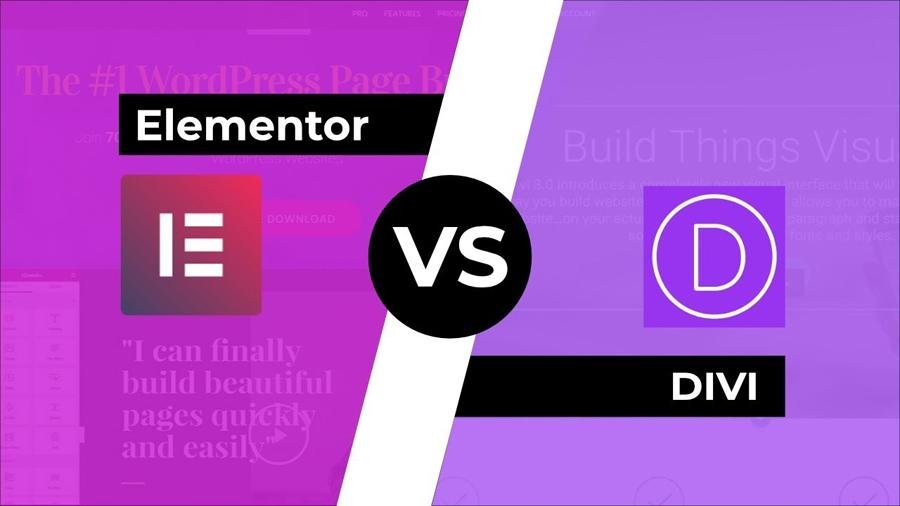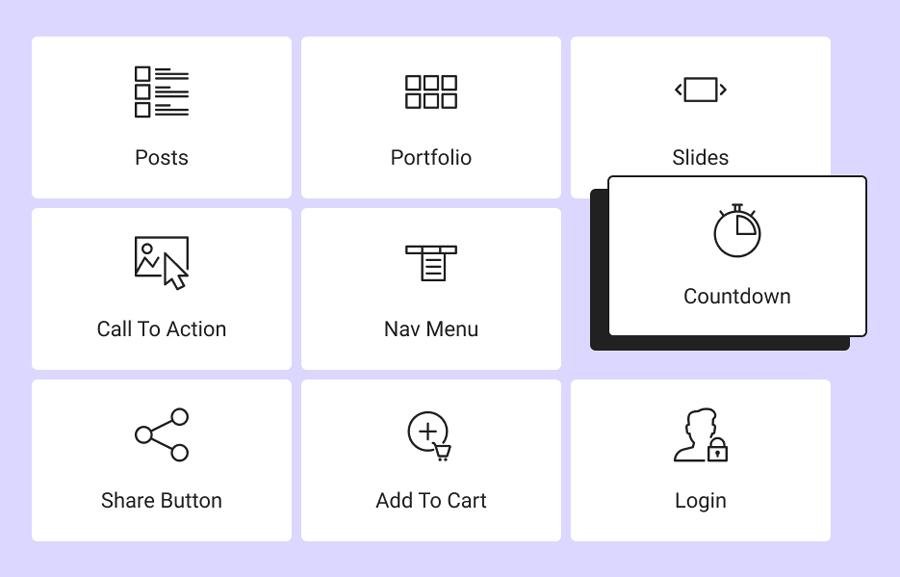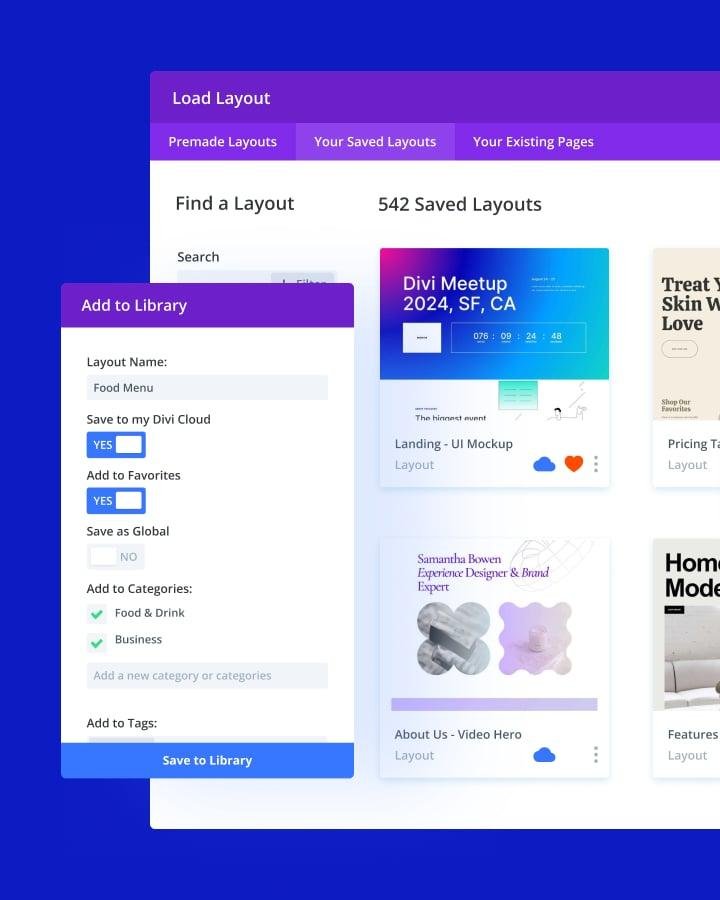Click here to buy secure, speedy, and reliable Web hosting, Cloud hosting, Agency hosting, VPS hosting, Website builder, Business email, Reach email marketing at 20% discount from our Gold Partner Hostinger You can also read 12 Top Reasons to Choose Hostinger’s Best Web Hosting
Choosing between Elementor vs Divi feels like a fork in the road for every WordPress project — both promise drag-and-drop freedom, but the wrong choice can inflate development time, create inconsistent brand styles, or slow your site. That frustration is common: you launch a site quickly only to spend weeks fixing CSS bloat, template mismatches, or clumsy client handoffs. This piece solves that problem by comparing Elementor vs Divi through the lens of real project costs — maintenance time, performance, team handoffs, and long-term licensing — so you can pick the builder that actually reduces friction for the kinds of sites you build most.
Quick verdict
Elementor: Best if you want a rich third-party ecosystem, built-in marketing tools, and a modern editor with dynamic content and AI-assisted features. Ideal for freelancers, marketers, and teams using WooCommerce or heavy integrations.
Divi: Best if you prefer an all-in-one theme + builder with deep design system controls and the newly rebuilt Divi 5 performance features — especially valuable for designers who want tighter global design tokens and visual consistency.

Comparison table — Elementor vs Divi
| Feature / Need | Elementor | Divi |
|---|---|---|
| Editor experience | Modern, widget-rich front-end editor; friendly for marketers and rapid landing pages. | Visual, tightly integrated builder with strong global style controls — great for designers. |
| Theme & Template Builder | Mature Theme Builder; wide dynamic tag support (ACF, Pods). | Full theme builder with emphasis on global design tokens and systemized styles. |
| Dynamic content | Strong dynamic tags and integrations; fast to wire custom fields into templates. | Dynamic modules present and improving with Divi 5; excels when paired with global tokens. |
| Performance (real projects) | Conditional loading experiments; large third-party kits can increase output. | Divi 5 rebuild focuses on leaner output; good for networks if you control modules. |
| CSS / Asset management | Many third-party add-ons — can add CSS/JS bloat if unchecked. | Centralized design tokens reduce style drift; fewer surprises with shop-managed ecosystem. |
| Third-party ecosystem | Very large marketplace (widget packs, template kits, marketing tools). | Curated ecosystem (Elegant Themes + official marketplace); many official layout packs. |
| WooCommerce & marketing | Rich built-in marketing widgets (popups, forms) and WooCommerce builder. | Strong templates for product sites; marketing features available via Elegant Themes stack. |
| Licensing model | Tiered plans by number of sites (free tier available). | Unlimited sites under Elegant Themes membership; yearly or lifetime options. |
| Best for | Freelancers, marketers, agencies needing fast integrations and campaign tools. | Designers, agencies managing many sites who value systemized global styles. |
| Learning curve | Gentle for content editors; deeper features for developers. | Slightly steeper for full design-system mastery, but powerful once learned. |
How I compared them
This comparison focuses on real project needs:
Editor & design control (visual precision, global styles)
Site architecture (theme builder, templates, dynamic content)
Performance & output (page weight, CSS handling)
Ecosystem & integrations (third-party add-ons, WooCommerce, marketing)
Workflow for teams (role management, export/import, library)
Pricing & licensing for agencies
Where vendor docs make claims, I referenced official feature pages and focused on practical examples and agency trade-offs.
Editor & design control — Elementor vs Divi
Elementor
Modern front-end editor with pixel controls, responsive breakpoints, and global fonts/colors. It exposes many widgets and prebuilt blocks, and supports dynamic tags for CMS data. Great if you want quick landing pages with marketing widgets like popups, forms, and A/B-friendly layout options.

Divi
Visual builder tightly integrated with the Divi theme and its global design system. Divi 5 pushed the editor toward more modular design tokens (variables, option groups), custom breakpoints, nested rows, and module groups — features that reward designers who build design systems across many pages.

Practical takeaway: If you want marketing-first widgets and lots of third-party templates, Elementor tends to speed up campaigns. If you want enforceable global styles and design-token control for brand consistency at scale, Divi’s system is compelling.
Site architecture & dynamic content — Elementor vs Divi
Theme/Template control: Both offer theme-builder capabilities (headers, footers, single/post templates). Elementor’s Theme Builder is mature and integrates with dynamic content via custom fields. Divi’s Theme Builder provides similar functionality but emphasizes template consistency through its design variables.
Dynamic content: Elementor exposes dynamic tags widely (ACF, Pods, custom fields). Divi supports dynamic modules and has expanded capabilities with Divi 5’s templating and attribute management.
Real-world note: For content-driven sites (multi-author blogs, membership, directories), Elementor’s dynamic tagging is easier to wire up quickly. For product catalogs and templates where visual system consistency matters, Divi’s design variables pay off.
Performance & output — the hidden cost
CSS & assets: Historically, page builders can add extra CSS/JS. Elementor has experimented with conditional CSS loading and “experiments” to reduce overhead; Divi 5 explicitly refocused on leaner output and performance. If page speed is a contract requirement, test real pages (not demos) — both builders can produce fast pages if templates are built cautiously, but defaults and third-party modules can spike load times.
Best practice: Use optimized themes (Elementor’s minimal themes or a lean Divi child theme), lazy load large media, and audit plugin overlaps. For high-traffic sites, export a page HTML snapshot and run Lighthouse or WebPageTest to find bloat before launch.
Ecosystem & integrations
Elementor: Big marketplace of third-party widgets, template kits, and official marketing features (popups, forms, WooCommerce builder). That makes pivoting fast — but also creates maintenance responsibilities as plugins update separately.
Divi: Strong central ecosystem managed by Elegant Themes: layouts, child themes, and official modules are tightly controlled. Third-party Divi add-ons exist, but the curated approach lowers the surprise factor for maintenance.
Choice factor: Agencies that prefer many niche plugins and premade kits may lean Elementor. Teams who want a smaller, centrally-managed toolset may prefer Divi.
Workflow & team collaboration
Library + portability: Both support template libraries, but Elementor’s template kits and global widgets are slightly more exportable between sites; Divi focuses on global styles and system-level presets in its library.
Role & handoff: If handoff to non-technical clients is common, Divi’s global design tokens reduce accidental style drift; Elementor’s UI is arguably friendlier for marketing users who edit content regularly.
How to Launch Your WordPress Website in 30 Minutes at NO Cost
Mini case study — small agency choosing between them:
A 3-person agency moved an existing WooCommerce client from a legacy theme into a page builder. They chose Elementor because:
Client needed campaign popups and page-level A/B testing.
The team used multiple third-party integrations (CRM, payment add-ons).
Result: faster prototyping, but they spent an extra afternoon optimizing CSS after installing several third-party kits.
Another agency rebuilding a portfolio network chose Divi (Divi 5) because:
They wanted identical typography/layout tokens across 50 micro-sites.
Divi’s design variables reduced manual fixes and made bulk updates predictable.
Result: fewer style regressions and faster brand rollouts, but a steeper learning curve for some junior editors.
Which WordPress Drag and Drop Builder Wins? Find Out Your Ideal Choice
Pricing & licensing
Elementor — Free version available. Pro plans start from lower monthly/annual rates and scale by the number of websites and feature tiers (Pro includes Theme Builder, marketing widgets, WooCommerce tools, and more). Compare plans on Elementor’s official pricing page for current site-count and feature breakdown.
Divi (Elegant Themes) — Sold as part of Elegant Themes membership. Typical options include:
Yearly membership: $89/year (access to Divi Theme & Builder + other Elegant Themes plugins).
Lifetime membership: $249 one-time (unlimited sites, lifetime updates/support).
Both plans permit unlimited websites and include Divi’s full builder features; optional paid add-ons or services may add cost.
Quick licensing takeaway
If you build many client sites, Divi’s unlimited-site membership (lifetime option) often becomes the cheaper option long-term.
If you build a handful of sites and need specific marketing widgets or third-party integrations per site, Elementor’s tiered pricing can be more flexible.
System Friction
Most comparisons list features side-by-side. The practical difference that matters is “system friction” — the total time your team spends keeping pages consistent, fast, and under version control across projects. That friction comes from:
how each builder handles global design tokens,
how easy it is to audit output CSS/JS, and
how predictable updates from third-party kits are.
If you measure builder choice by time saved on maintenance (not just initial build speed), Divi 5’s design variables can be a long-term saver for networks of sites, while Elementor’s ecosystem speeds up single-site launches and marketing experiments. Choose based on whether you pay more in hourly maintenance (favor Divi) or in rapid feature launches and integrations (favor Elementor).
Key Takeaways
Elementor is powerful for marketing-focused sites and integrations, with a large third-party marketplace and rich widget set.
Divi (especially Divi 5) is built for systemized design at scale, with new features that reduce manual style fixes across many pages and sites.
Performance depends more on template choices and third-party add-ons than the builder alone — test real pages.
Agencies should weigh license model and long-term maintenance (Divi can be cheaper at scale; Elementor speeds up prototyping).
Handoff matters: Divi’s design tokens reduce drift, Elementor’s UI empowers marketers.
6 Simple Ways to Fix the Error Establishing a Database Connection in WordPress
FAQs (People Also Ask)
Q: Which is faster — Elementor or Divi?
A: Neither is inherently fastest; it depends on templates, third-party widgets, and how well you optimize CSS/JS. Divi 5 aims to produce leaner output, while Elementor offers conditional loading experiments to reduce bloat. Test with your real content.
Q: Can I switch from Elementor to Divi (or vice versa) without rebuilding?
A: No seamless migration exists. Page builders store layouts differently; expect to rebuild templates and test content. Export/import library items helps for same-builder reuse, but cross-builder migration is manual.
Q: Which is better for WooCommerce stores?
A: Elementor has targeted WooCommerce builder widgets and marketing integrations that make building stores quick. Divi can produce consistent product templates across many pages and scale well with design systems — choose based on whether you prioritize marketing widgets or visual system consistency.
Q: Do both builders support custom fields and dynamic content?
A: Yes. Elementor integrates widely with ACF/Pods and dynamic tags; Divi supports dynamic modules and has expanded template/dynamic capabilities with recent updates. Both can power headless or CMS-driven sites when set up correctly.
Conclusion
Elementor vs Divi isn’t a winner/loser question — it’s a workflow match. For campaign-heavy sites that rely on quick integrations and a vast template marketplace, Elementor is a safer short-to-midterm bet. For multi-site networks, brand systems, or designers who want enforceable global tokens and predictable maintenance, Divi 5’s rebuilt architecture offers real long-term value. Pick the builder that reduces your system friction for the types of projects you do most often, then validate with a two-page prototype and a Lighthouse audit before committing across a full site or network.
Try a sandbox prototype in both builders (build the home page + one template), run a Lighthouse test, and compare the maintenance time you expect for three months — that practical test will show which builder truly fits your workflow.
How to Install WordPress on Hostinger: 7-Step Beginner’s Guide
Sources
Elementor official documentation & pricing page.
Elegant Themes (Divi).
Now loading...





